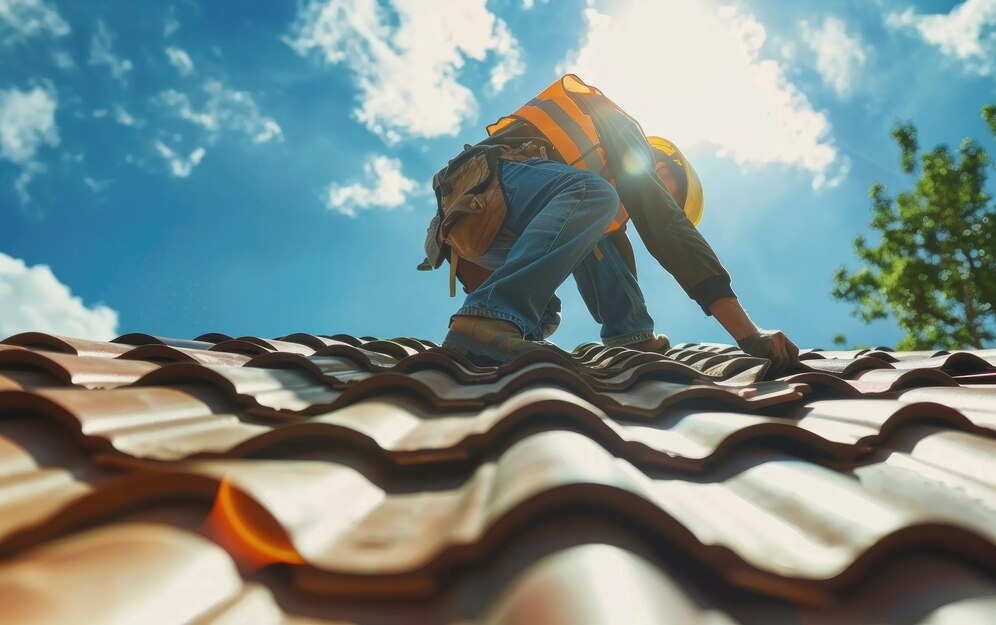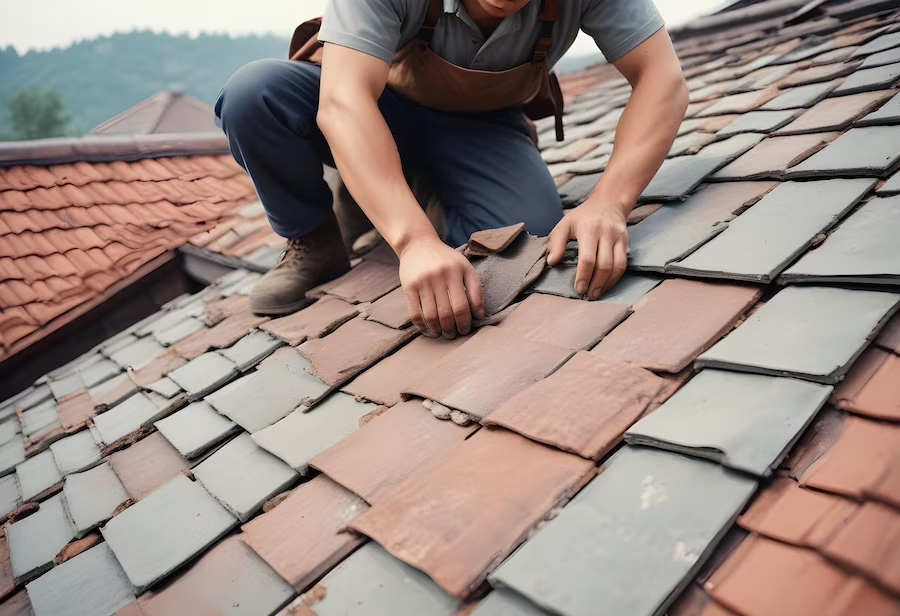
Roofing Techniques: How to Optimize Performance
When it comes to maintaining your home, the roof is often overlooked, yet it’s one of the most critical components of your house. A well-maintained roof not only protects your home from the elements but also contributes to your property’s overall efficiency and longevity. In this guide, we’ll explore various roofing techniques that can help optimize performance, ensuring that your roof performs at its best for years to come.
Understanding Your Roof
Understanding your roof’s performance is key to maintaining a safe and efficient home. A roof’s primary role is to protect your home from environmental elements such as rain, snow, wind, and sunlight. This protection is crucial for preventing water damage, heat loss, and structural issues.
For a roof to function effectively, it must be sturdy and well-constructed, with high-quality materials that can withstand harsh conditions. Proper insulation is also vital, as it helps regulate indoor temperatures and reduces energy costs. Regular maintenance, including inspections and timely repairs, ensures that your roof continues to perform at its best and extends its lifespan.

Choosing the Right Roofing Material
The foundation of a high-performing roof starts with the material. Different roofing materials offer various benefits and drawbacks, depending on your location, climate, and budget.
Asphalt Shingles
Asphalt shingles are a popular choice for roofing due to their cost-effectiveness and ease of installation. They come in a variety of colors and styles, making them versatile for different home designs. However, they have a relatively shorter lifespan compared to other roofing materials, typically lasting 15 to 30 years.
Metal Roofing
Metal roofs are renowned for their exceptional durability, with lifespans that can exceed 50 years. They are effective at reflecting heat, which can lower cooling costs in hot climates. Additionally, metal roofs are resistant to severe weather conditions, including heavy rain and strong winds, providing long-term protection for your home.
Clay or Concrete Tiles
Clay and concrete tiles are ideal for hot climates due to their excellent insulation properties, which help keep homes cool. They are highly durable and can last several decades, though their weight may necessitate additional structural support. Their classic appearance adds a distinctive look to homes, enhancing curb appeal.
Slate Roofing
Slate roofing is celebrated for its durability and elegant, natural appearance. It is highly resistant to fire, weather, and rot, making it a long-lasting choice that can endure for over a century. However, slate is a premium option that requires professional installation and can be quite expensive compared to other roofing materials.
Proper Installation Techniques
Even the best materials can underperform if not installed correctly. Proper installation is key to ensuring your roof performs optimally.
- Professional Installation: Always hire a licensed and experienced roofing contractor. Professionals will ensure that the installation follows all manufacturer guidelines and local building codes.
- Ventilation: Proper ventilation is essential for any roofing system. It prevents heat and moisture buildup in the attic, which can lead to damage and reduced lifespan of the roof. Ensure your roof has adequate intake and exhaust vents to allow for proper airflow.
- Underlayment: Installing a high-quality underlayment beneath the roofing material provides an additional layer of protection against leaks and improves insulation.
- Flashing and Sealants: Flashing around chimneys, vents, and skylights is critical to preventing leaks. Use high-quality flashing and sealants to ensure these areas are watertight.
Routine Maintenance
Regular maintenance is crucial to keeping your roof in top condition. Here are some maintenance tips to help you get the most out of your roofing system:
Inspect Regularly
Conduct visual inspections of your roof at least twice a year, ideally in the spring and fall. Look for missing or damaged shingles, rust on metal roofs, and any signs of wear and tear.
Clean Gutters
Clogged gutters can lead to water backup, which can damage your roof and lead to leaks. Clean your gutters regularly to ensure proper water flow.
Remove Debris
Keep your roof free of debris, such as leaves and branches, which can trap moisture and lead to mold growth. Use a roof-safe ladder and brush to remove debris carefully.
Trim Overhanging Branches
Trees close to your home can drop leaves and branches on your roof, potentially causing damage. Trim back any overhanging branches to reduce this risk.
Addressing Roof Leaks
If you notice signs of a leak, such as water stains on your ceiling or walls, it’s important to address the issue promptly to prevent further damage.
- Locate the Source: Identify the source of the leak by checking the roof and attic. Leaks can be caused by damaged shingles, compromised flashing, or clogged gutters.
- Temporary Fixes: If a professional repair isn’t immediately possible, you can apply a temporary patch using roofing tape or a tarp. However, this is only a short-term solution until a permanent repair can be made.
- Professional Repairs: For a permanent fix, hire a professional roofer to address the issue. They will have the expertise and tools to properly repair the damage and prevent future leaks.
Enhancing Roof Insulation
Enhancing roof insulation is crucial for improving your home’s energy efficiency and overall roof performance. Proper attic insulation plays a significant role in regulating indoor temperatures by preventing heat loss during winter and maintaining cool temperatures in summer. This not only reduces your energy bills but also helps avoid issues like ice dams in colder climates, which can damage your roof and home.
In addition to attic insulation, reflective roofing materials can further enhance your home’s comfort. These materials or coatings are designed to reflect sunlight and minimize heat absorption, keeping your home cooler and reducing the need for air conditioning. By incorporating both attic insulation and reflective materials, you can achieve a more energy-efficient and durable roofing system.
Upgrading Your Roofing System
Upgrading your roofing system can be a wise investment if your current roof is approaching the end of its lifespan or has sustained considerable damage. Modern roofing options enhance performance and energy efficiency, offering long-term benefits for your home. One popular upgrade is cool roofing, which is designed to reflect more sunlight and absorb less heat. This can help reduce cooling costs, improve indoor comfort, and extend the lifespan of your roof by minimizing thermal stress.
Another effective upgrade is the installation of solar panels. Solar panels not only provide renewable energy but also add an extra layer of protection to your roof. Before installing, ensure your roof is structurally sound to support the panels. Additionally, roof coatings are a viable option to enhance durability. These coatings protect against UV rays, water damage, and environmental wear, ultimately extending the life of your roof and maintaining its efficiency.
Preparing for Severe Weather
Weather conditions can have a significant impact on your roof’s performance. Preparing for severe weather can help protect your home and minimize potential damage.
- Reinforce Your Roof: Strengthen your roof by ensuring that it is properly anchored and that all components are securely fastened. This can help it withstand strong winds and heavy rain.
- Install Storm Shutters: Storm shutters can provide additional protection for your windows and reduce the risk of damage during severe weather events.
- Emergency Kit: Keep an emergency kit with essential supplies, including tarps, roofing nails, and a ladder, to make temporary repairs if needed during a storm.
Choosing the Right Roofing Contractor
Selecting a reputable and experienced roofing contractor is crucial for optimizing your roof’s performance.
Check References
Before hiring a roofing contractor, request references from previous clients and read online reviews. This will help you gauge the contractor’s reputation for quality work and customer satisfaction, ensuring they have a proven track record of successful projects.
Verify Licensing and Insurance
Confirm that the roofing contractor is properly licensed and has adequate insurance coverage. This is crucial for protecting yourself from liability in case of accidents or damage during the roofing project. Insurance also ensures the contractor can cover any potential issues.
Get Multiple Quotes
Seek quotes from several roofing contractors to compare their pricing and services. Make sure each quote is detailed and includes a clear breakdown of costs. This will help you make an informed decision and avoid unexpected expenses.
Conclusion
Optimizing a roof’s performance involves selecting the right materials, using effective installation techniques, and maintaining the roof regularly. Upgrading with cool roofing, solar panels, or protective coatings can enhance durability and energy efficiency. Choosing a reputable contractor is crucial—verify their references, licensing, and insurance to ensure a successful project. By being proactive with roofing care and considering these advanced options, homeowners can extend their roof’s lifespan and improve overall comfort and efficiency. For expert advice and quality service, contact EZ Window Solutions of Beachwood at (440) 773-4396. Professional assistance can help achieve the best results for roofing needs.


Write a Comment